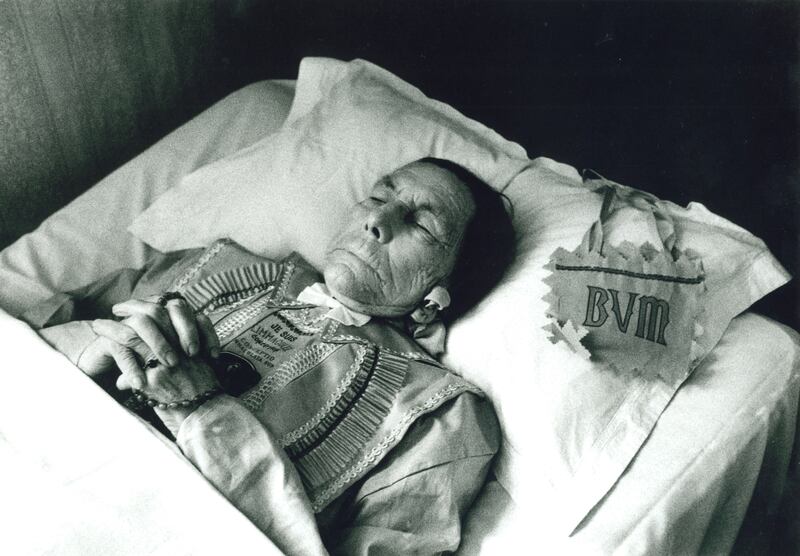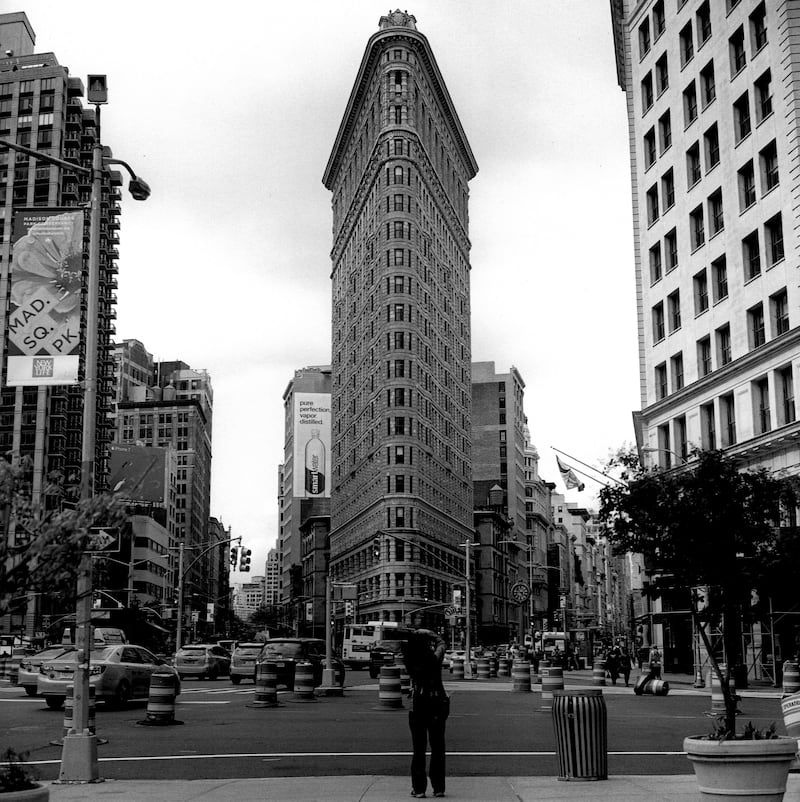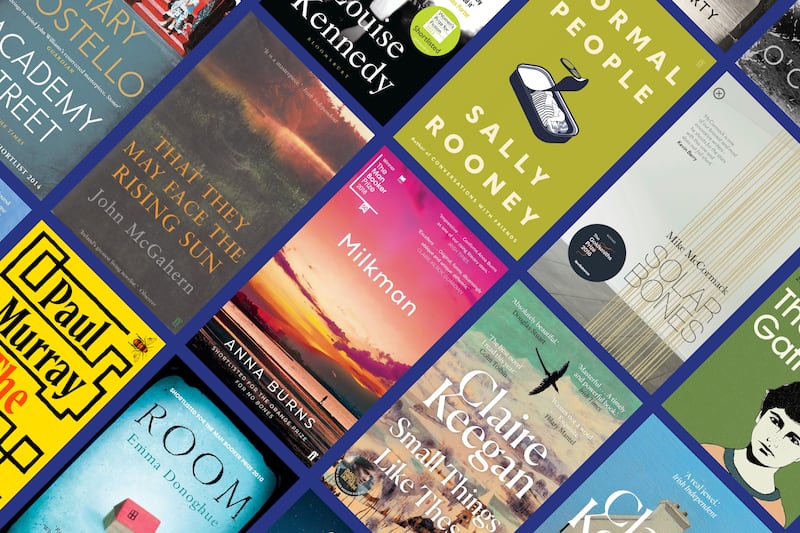“We didn’t need dialogue,” the ageing silent-film star cries as she looks at herself in an old movie. “We had faces!”
The face is that of Gloria Swanson, star of Sunset Boulevard, whom I met late in her life, and relatively early in mine, at Hamiltons, the art gallery in Mayfair in London, in 1979. She had seen my exhibition The Wake of Katy Tyrrell there, and her sculptures and paintings were the next show. The meeting was arranged by the gallery’s owner, Mr Matthews, who had seen a spread of the wake photographs in the British Journal of Photography (a publication that George Bernard Shaw, a camera enthusiast, often wrote for).
I photographed Swanson beside her sculpted self-portrait, which was rather good. We went to the Connaught Hotel, close by, for coffee. I wanted to ask about the photographer Edward Steichen, who had photographed her in 1924. His portrait of Swanson has become an American classic, her face swathed in black lace, her eyes large and luminous. She told me Steichen envisioned her as “a leopardess lurking behind leafy shrubbery”.
She wanted to know more about my sequence on the wake. My image of Tyrrell in the wake room, dressed in a Legion of Mary burial shroud, reminded her of a Native American, she said. I told her I photographed the ritual for two nights and three days, from the deathbed to the grave.

My imaginary future was shaped by the films I saw as a seven-year-old from the threepenny pews at the Savoy in Athy, Co Kildare, in 1952. Every Sunday I saw the world in Bob’s cinema, as it was known, after Bob Webster, its manager. How I loved those afternoons: cowboys and Indians, gangster films, musicals; I saw the skyscrapers of New York and the pyramids of Egypt. Everyone smoked – the stench permeated the cinema. Watching the smoke make waves in the light that projected the reels of 35mm black-and-white film on to the large white screen would steal my attention now and then.
In the photographs in the glass case outside the Savoy, Hollywood was both the centre of the world and a fantasy realm of wealth and privilege, the Lincoln Continentals and Cadillacs cruising along beneath the neon lights of Sunset Boulevard.

In the course of a 60-year career I photographed many stars. I told Swanson that I saw her in Sunset Boulevard in my hometown back in the day. She seemed curious; had any movie changed anybody’s life, she asked. It had certainly changed mine, I told her; it was all we had then. The mere mention of Swanson was enough to conjure the name of Norma Desmond, her character in Billy Wilder’s movie. The shot of Desmond declaring “All right, Mr DeMille, I’m ready for my close-up” remains indelibly in the minds of so many. The film is one of the most revered of its time and the most famous of Swanson’s career.
By the time I met Swanson, who was born on St Patrick’s Day in 1899, in Chicago, she was a lot more interested in her art – she had successful shows in New York, London and Paris – than in being a Hollywood icon. She told me a great deal about Steichen, who had worked for Vanity Fair and Vogue from 1923, taking innovative images of Hollywood stars.
Regarded as “the modern eye of the times”, he took a photograph of the Flatiron Building in New York, in 1904, that became the second most expensive photograph ever in 2022, when it sold at Christie’s for almost $12 million. So many photographers have photographed the Flatiron Building. The last time I was there, in 2017, I arrived at 5am with my tripod and Rolleiflex camera to catch it before the morning madness of the city began.

For me, Steichen was one of the pre-eminent photographers of the 20th century, photographing landscapes and a pantheon of great artists and writers. In 1955, at the Museum of Modern Art in New York, he curated the immense exhibition The Family of Man, featuring more than 500 photographs by photographers from 68 countries. He considered it his greatest achievement.
In 1989, to celebrate the 150th anniversary of the birth of the medium, the Royal Academy of Arts, in London, staged The Art of Photography. The first photographic show to hang on the academy’s walls, it featured a cavalcade of big names, including Louis Daguerre – credited as the man who invented photography, and who shouted from his Paris balcony in 1839, “I have arrested the light” – William Henry Fox Talbot, Nadar and Julia Margaret Cameron.
Swanson, who died in New York in 1983, aged 84, could not have begun her career at a more important time in the history of film and photography.


















